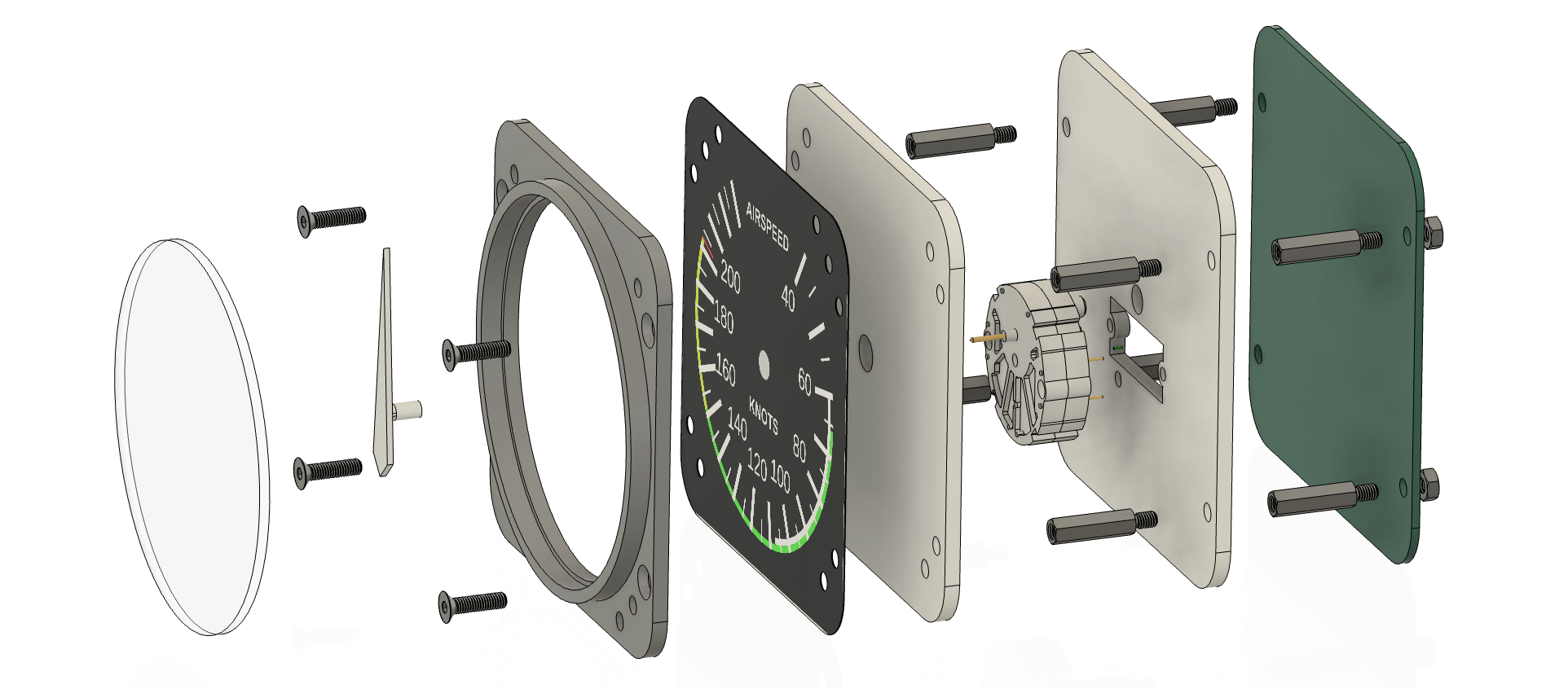The gauge is designed as a series of parallel 3D printed plastic “decks”, separated by standard PCB standoffs. It’s compatible with a typical 3 1/8 inch panel cutouts.
Controller and interface board is the last deck. Like every gauge in CANSim, It’s based on Arduino Nano and provides RJ45-based CAN interface. All gauges communicate with a master controller which in turn has USB connection to a host PC with a simulator (or to a networked PC).
Parts List

“
| N | Component | Quantity | Notes |
|---|---|---|---|
| 1 | Front Bezel Glass | 1 | |
| 2 | Front Bezel | 1 | |
| 3 | Arrow | 1 | |
| 4 | Face | 1 | |
| 5 | Face deck | 1 | |
| 6 | Motor deck | 1 | |
| 7 | Motor x27.168 (or similar) | 1 | |
| 8 | M3 Stand-off | 8 | |
| 9 | M3 Screw | 4 | |
| 10 | M3 Nut | 4 | |
| 11 | M3 Heat Set Inserts | 4 | |
| 12 | M2 Screw 20mm | 2 | |
| 13 | Controller/IO PCB | 1 | Custom made |
Assembly
- Insert glass (1) into front bezel (2). Optionally glue (normally not required for home use). Front bezel is ready.
- Glue the face paper (4) into its deck using PVA or similar glue.
- Mount the motor (7) into its deck (6) using two M2x20 screws.
- Stack the face deck and the motor desk using 4 standoffs (8). Attach the arrow (3) to the motor.
- Place the front bezel on the top of the assembly and fix with four M3 screws (9).
- Attach PCB and fix with M3 nuts (10).
- Mount on the panel using cutouts.
Front Bezel
A front bezel design is shared by most of CANSim instruments. It contains the plate itself and a glass. A bezel is typically 3D printed from ABS.
A circular glass (74mm diameter) can be cut from 2mm transparent acrylic plate. 1.5mm or 3mm will work as well
Faceplate
Motor deck
Assembly tips
Electronics and PCB
Schematics:
“
The board is done with single-side PCB design, for easier home manufacturing.
Top (component) side
Bottom (solder) side
Firmware and I/O
Generic gauge is receive-only instrument, it can receive a single float value as a gauge position.
| Port | Data Type | Description |
|---|---|---|
| 0 | FLOAT | Arrow Position 0..MAX |
Firmware source code: https://github.com/avignatenko/SimGauges/tree/master/src/GenericSingleNeedle
